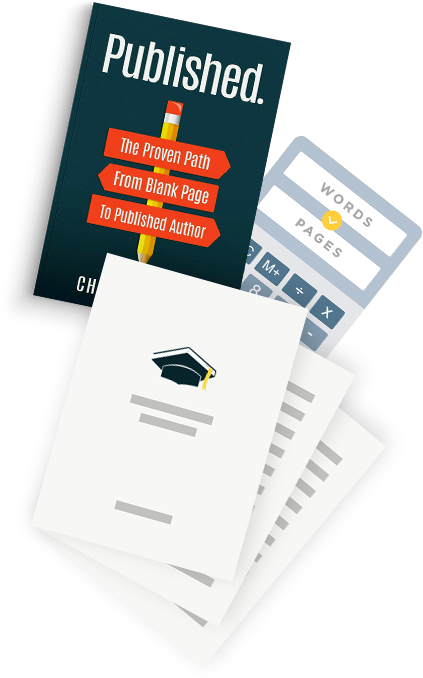There’s a reason so many authors want to learn how to write about angst. It’s popular, particularly in the young to middle adult reader ranges. That’s not to mention the fan fiction community raving around angsty writing.
It’s coveted for a reason. Particularly in our day and age, angst is relatable. It often makes readers feel seen and understood. Give a reader that and they’ll have a hard time putting your book down.
But writing about angst isn’t as easy as you think, and there will come a time when you’ll have to determine what’s angst and what’s going overboard. Plus you’ll want to avoid being too affected by your own angst in the process.
Whether you’re writing a novel, a short story these tips for writing this particular effect will help.
Table of Contents
What is angst in writing?
Angst in writing is when an author focuses on the anxieties, fear, and sense of dread of their characters, typically at the expense of the character’s hopes and wishes. You’ll find many main characters carry a sense of angst about their existence.
In books and novels, the characters with a tormentuous plots have the most angst. This specific trait—the suffering of the main character—is what readers look for in angsty writing.
How to Write About Angst (Without Drowning in it)
A challenge writers often face is being in the depths of challenges emotions and then walking around life as if they haven’t been amygdala-deep in some rough thoughts. Part of being a great writer is being in touch with those emotions.
But that doesn’t mean you have to maintain contact always. So let’s learn how to write about angst, but also how to not let it take over our lives. Save it for the characters.
1. Discover your own angst
You have to draw from somewhere if you’re going to learn how to write about angst in a realistic way.
All emotions in writing come from a place of experience + imagination. You don’t have to have lived a certain situation to imagine what it might be like based on certain experienced you do have.
So first, you have to figure out where your own angst stems from because that’s how you’ll write most realistically and in a way that readers can connect with.
Here are a couple methods to discover your own angst:
- Work on your self-awareness to figure out where your angst stems from
- Journal to help decipher the truth source of angst and to understand it deeper
- Notice when you feel anxious or worried and understand why you’re feeling that way
- Ask friends or close family what they think makes you angsty because an outside perspective helps us learn things we might not otherwise notice
Now that you’re reading about it, you’ll be more aware of your own angst already. Use that and jot down ideas for transferring these emotions to the page.
2. Pick and choose only a few sources of it
For every character, there has to be a few sources of their angst. It can’t be from a dozen different areas of their lives. Because in truth, we all experience angst as it relates to certain areas only; we can almost always link our concerns back to a single source or belief.
For that reason, you’ll have to develop your character’s beliefs and hinge their story on them.
Choose up to 3 guiding beliefs for your character. These are the underlying beliefs they have about the world, themselves, and how the world works. They inform all the decisions your characters make, and will also inform what will hurt them the most.
This allows you to have a few key sources for angst that’s connected directly to the character arc too.
3. Go deep with angst, not wide
You don’t want dozens of sources for angst. That won’t produce the anxiety-ridden result in the readers. What will, though, is going deeper into current sources, unearthing layer upon layer of just how bad a situation can actually get.
Just when the characters think they’re in the clear, that they’ve overcome that thing causing them trouble, you hit them with another facet of the very same issue.
This pairs with tip #2 significantly. You only need a few sources, but you want to deepen them. So in this step, pick one of the sources of angst (like societal expectations, for example) and list 10 ways this can show up and create angst. Then, take that list and order them from “least harmful” to “most harmful”.
Doing this will allow you to pick which effects to write into your story’s structure. Because we want the effect of deepening the angst, you’ll start the story with the least harmful and progressively get worse.
4. Plan angst specific to the character
While we’ve focused quite a bit on you as the author so far in teaching you how to write about angst, you also have to make sure the angst fits the character. When writers get the advice to “write what you know”, as with the tips above, it’s more about using your experiences and understandings to make fictional scenarios feel more real.
This is why some of the best authors once had highly specialized professions prior to getting published. As is the case with lawyers who write mysteries and aerospace engineers who write sci-fi.
But they’re not writing exactly what they know, and neither will you.
Make sure that when you’re developing the characters, you’re giving them goals and interests that you can understand. They don’t have to be the same as you. You can also give them flaws that you can relate to and use those to increase the angst in your writing.
For example, my novel-in-progress has two main characters. The first, Torryn, has a flaw that she takes responsibility for all the wrong in her life, even things that aren’t her fault. While this guilt might show up differently for her because of her history and life experience, it’s something I can personally relate to, and therefore imagine scenes that will create angst for her because I know how it feels.
If the angst isn’t related enough to your character’s unique goals and motivations, it won’t make sense to the reader.
5. Leave opportunity for hope
Unless you’re writing a true tragedy, in which it’s not a happy ending at all, you have to leave some room for hope. Part of learning how to write about angst is figuring out how to balance the angst with other emotions so your reader doesn’t just get depressed.
Anxiety and worry is actually related to hope. It’s the fear that the hopes will not be realized, that good will not come.
Without the possibility for something good happening in your story, you can’t have true angst.
This means you have to make sure the reader knows what the character wants. In Jerry Cleaver’s book that teaches writing fiction called Immediate Fiction, he advises a writer include a few major parts to each scene: want, obstacle, action, and emotion.
The sooner you can establish a character’s want, the better. This is what develops hope in the reader. They want the character to succeed in their goals. And if you’re able to set the stakes (what will they lose if this fails), it will work even better. Because when the character then reaches the obstacle, takes an action against it and loses, the emotion present is often angst.
But the angst doesn’t exist without knowing what the character wants and establishing hope in the reader.
6. Keep an eye out for fake angst
Because this is a focus, it can be easy to go overboard. Including hope is definitely one of the many ways you can do it, but you’ll probably need to cut a few things too.
Adding unnecessary anxiety and stress to your character, especially when it doesn’t relate to the main plot will only be confusing and send your reader through a loop. Have you ever read a book where the author made a big deal of something—something you took mental note of and then looked for—only for it to be completely dropped from the story, never to be referenced again?
That’s fake angst. It’s not useful and will instead bring your reader further from feeling the effects of that anxiety.
Many of the writers in the tips in the section below agree with this, voicing concerns over trivial sequences of bad things happening to the characters without substance behind them.
7. Take breaks and reflect on the good
This is where you’ll learn to avoid letting angst take over your life. When you write about challenges topics, they can actually alter your emotional state. Some authors don’t have issues with this. But others are more sensitive and are highly impacted by them.
It can feel like method acting to some authors.
Which is why if you’re writing these types of situations, you’ll need to reflect on good things in your personal life. Keep your mood high and don’t let the writing of angst allow your life to become an angsty story as well.
Take breaks if you need it, journal about what you’re grateful for, and allow your outlet for angst be the story you’re writing.
Angst Writing Tips by Real Writers
If you want some more specific, hands-on advice for learning how to write about angst, these writers will help. While not all advise is to be taken seriously, these tips come from experience, which allows you to skip at least a little bit of practice to avoid unnecessary challenges.
1. Maintain character integrity
This tip comes from Reddit user cm_blue, writing about good angst being genuine to the character. Don’t create an anxiety inducing situation that doesn’t align with what’s known of the character.
2. Avoid major trauma for minor angst
You don’t need to force major trauma upon a character just to fill the need for angst. A now-deleted Reddit user cited trauma like murder, sexual assault, and wartime battles as major trauma that might not be necessary.
3. Avoid minor trauma causing major angst
Flipping this piece of advice because it’s necessary, especially in the young adults book genre. When you have a character that overreacts to certain experiences, you’ve created a whiney character.
LadyRimouski on Reddit pointed out that you should take time to craft a conflict that justifies the level of angst you want in the story.
4. Focus on goal-disrupting angst sources
This goes hand-in-hand with the above two tips. In order to learn how to write about angst well, you want to think about how you can create these anxieties as it relates to your character’s goals. Reddit user OldSchoolJohto says as much too.
If you really want to know how to write about angst in a way that makes readers both cry and cling to your books, practice. Get feedback. Iterate, and try different methods. You’ll learn more by diving in after knowing these tips.



